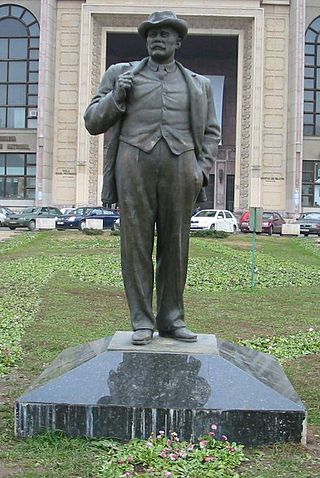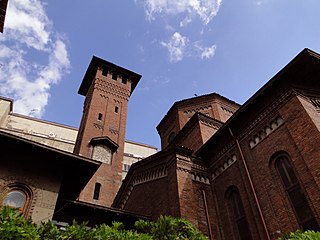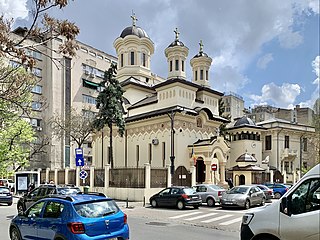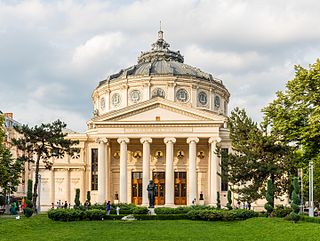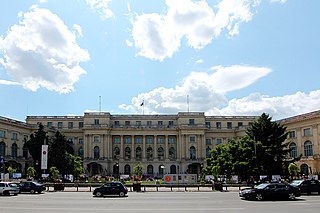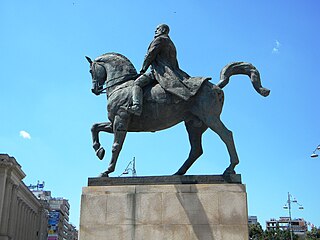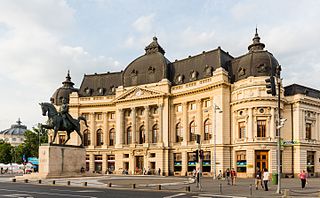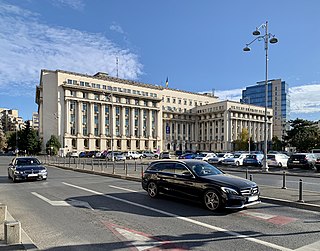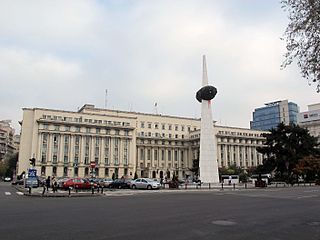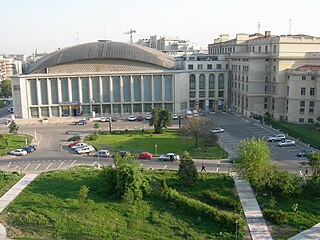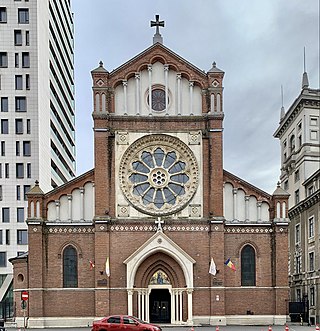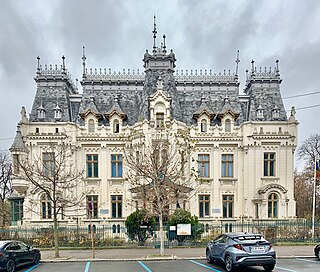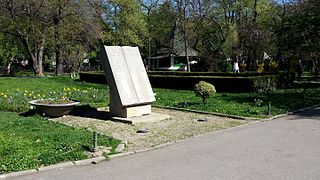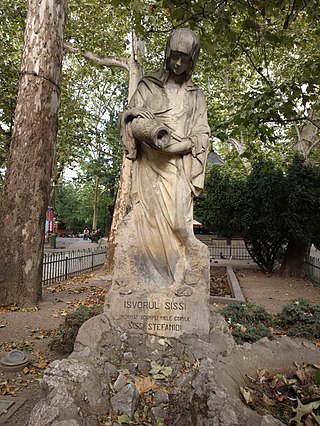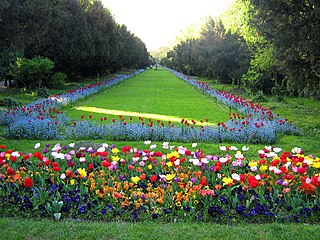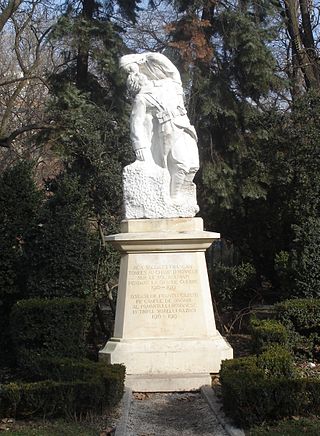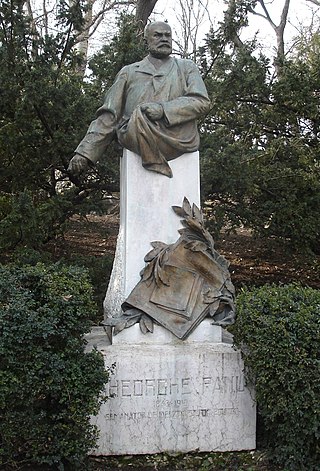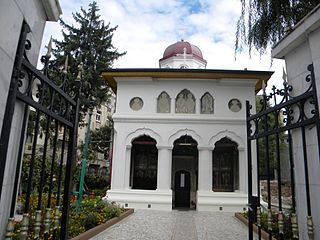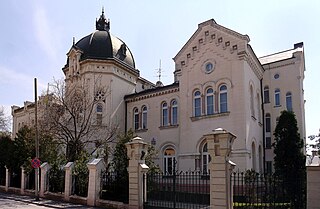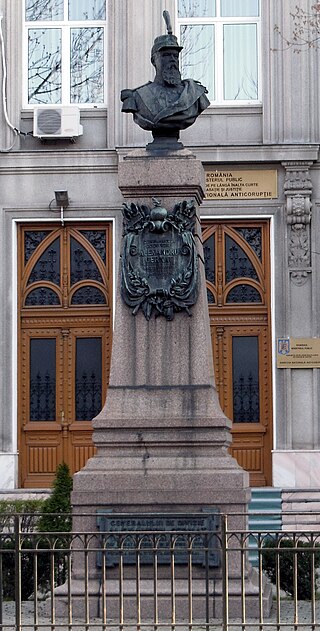Self-guided Sightseeing Tour #5 in Bucharest, Romania
Legend
Guided Free Walking Tours
Book free guided walking tours in Bucharest.
Guided Sightseeing Tours
Book guided sightseeing tours and activities in Bucharest.
Tour Facts
6 km
102 m
Experience Bucharest in Romania in a whole new way with our free self-guided sightseeing tour. This site not only offers you practical information and insider tips, but also a rich variety of activities and sights you shouldn't miss. Whether you love art and culture, want to explore historical sites or simply want to experience the vibrant atmosphere of a lively city - you'll find everything you need for your personal adventure here.
Activities in BucharestIndividual Sights in BucharestSight 1: Ion Luca Caragiale
A statue of Ion Luca Caragiale, sculpted by Constantin Baraschi, is located on Maria Rosetti Street in central Bucharest, Romania. It is placed in front of the house where the dramatist and short story writer Ion Luca Caragiale once lived.
Sight 2: Cyclops Garage

The Ciclop Garage in Bucharest is a historical monument located on the territory of Bucharest.
Sight 3: Italian Church of the Most Holy Redeemer
The Italian Church of the Most Holy Redeemer is a Roman Catholic church located in Bucharest, Romania, at 28 Nicolae Bălcescu Boulevard.
Sight 4: Biserica Ortodoxă Boteanu-Ienii
Boteanu Church is an Orthodox church in Bucharest, sector 1. At this Church there is a part of the relics of St. John Jacob. The history of the church stretches back to 1682, when a lord named Mihul built a church dedicated to the "Cutting of the Head of Saint John the Baptist". The church is better known as "Bradu-Boteanu", because a tall fir tree grew next to the church and because the church was next to a slum called "Boteanului".
Sight 5: Romanian Atheneum
The Romanian Athenaeum is a concert hall in the center of Bucharest, Romania, and a landmark of the Romanian capital city. Opened in 1888, the ornate, domed, circular building is the city's most prestigious concert hall and home of the "George Enescu" Philharmonic and of the George Enescu Festival.
Sight 6: Mihai Eminescu
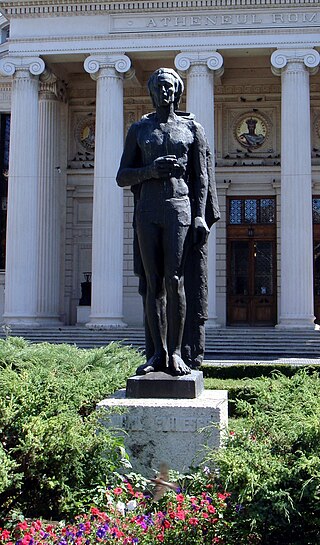
The statue of Mihai Eminescu in Bucharest executed in bronze, by the sculptor Gheorghe D. Anghel, in his workshop at the Pasărea Monastery, is located on Benjamin Franklin Street no. 1-3, sector 1, in the Garden of the Romanian Athenaeum in Bucharest.
Sight 7: National Museum of Art of Romania
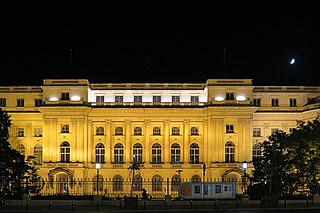
The National Museum of Art of Romania is located in the Royal Palace in Revolution Square, central Bucharest. It features collections of medieval and modern Romanian art, as well as the international collection assembled by the Romanian royal family.
Sight 8: Royal Palace
The Royal Palace of Bucharest, known as Palace of the Republic between 1948 and 1990, is a monumental building situated in the capital of Romania, on Calea Victoriei. The palace in its various incarnations served as official residence for the kings of Romania until 1947, when the communist regime was installed after Michael I of Romania's forced abdication. Since 1950, the palace hosts the National Museum of Art of Romania. The Romanian royal family currently uses Elisabeta Palace as its official residence in Bucharest. In addition, the Romanian government allows the royal family to use the Royal Palace different occasions.
Sight 9: Carol I
The equestrian statue of Carol I is a monument in Romania, situated in the central zone of Bucharest, on Calea Victoriei.
Sight 10: Carol I Central University Library
The “Carol I” Central University Library of Bucharest is a library in central Bucharest, located across the street from the National Museum of Art of Romania.
Sight 11: Palace of Ministry Internal Affairs
The Interior Ministry Palace is a building on Revolution Square in Bucharest, Romania. It houses the Ministry of Internal Affairs.
Sight 12: Memorial of Rebirth
The Memorial of Rebirth is a memorial in Bucharest, Romania that commemorates the struggles and victims of the Romanian Revolution of 1989, which overthrew Communism. The memorial complex was inaugurated in August 2005 in Revolution Square, where Romania's Communist-era dictator, Nicolae Ceaușescu, was publicly overthrown in December 1989.
Sight 13: Sala Palatului
Get Ticket*Sala Palatului in Bucharest, Romania is a conference centre and concert hall immediately behind the National Museum of Art of Romania, the former royal palace in the heart of the city. It was built between 1959 and 1960, during the communist era, as part of an architectural ensemble that includes 9 other buildings, called Piața Sălii Palatului. Over time, it has hosted various conferences such as the United Nations Economic Commission for Europe, World Population Conference, World Energy Congress, or the World Congress of the Red Cross.
Sight 14: Catedrala romano-catolică Sfântul Iosif
Saint Joseph Cathedral is a historical and architectural monument located in Bucharest, Romania, at 19 General Berthelot Street. It is the main place of worship which serves as cathedral of the Roman Catholic Archdiocese of Bucharest.
Sight 15: Kretzulescu Palace
Crețulescu Palace is a historic building near the Cișmigiu Gardens on Știrbei Vodă Street nr. 39, in Bucharest, Romania. It was built for the Crețulescu family in 1902–1904 by Romanian architect Petre Antonescu (1873–1965).
Sight 16: Monument to American Heroes
The American Heroes Monument in Cismigiu Park in Bucharest is dedicated to the 378 pilots and crew members of the US Air Force aircraft, who fell on duty on the territory of Romania during World War II, as well as to the American prisoners of war interned in camps on the territory of Romania.
Sight 17: Rotonda Scriitorilor
The Writers' Rotunda is a monumental ensemble, which was inaugurated on June 27, 1943 in the Cișmigiu Park in Bucharest, during the mandate of the mayor of Bucharest, Ion Rășcanu, on the initiative of the Minister of National Education, Ion Petrovici.
Sight 18: Izvorul Sissi Stefanidi
The Sissi Stefanidi Spring, located in 1927 in the Cișmigiu Park in Bucharest, is a sculpture made by Ion Dimitriu-Bârlad from Bașchioi stone.
Sight 19: Cișmigiu Gardens
The Cișmigiu Gardens or Cișmigiu Park are a public park in the center of Bucharest, Romania, spanning areas on all sides of an artificial lake. The gardens' creation was an important moment in the history of Bucharest. They form the oldest and, at 14.6 hectares, the largest park in city's central area.
Sight 20: The French Heroes Monument
The Monument of the French Heroes in Bucharest is a statuary group made of Carrara marble, dedicated, according to what is written bilingually on the pedestal, to the memory of the "French soldiers fallen on the field of honor of the Romanian land during the Great War 1916-1918" - "Aux soldats français tombés au champ d'honneur sur le sol roumain pendant la Grande Guerre 1916-1918".
Sight 21: Gheorghe Panu
The bust of Gheorghe Panu is the work of the Romanian sculptor Gheorghe Horvath. The monument is also called "The Sower of Ideas" and was erected by the newspaper "Adevărul" through public subscription.
Sight 22: Biserica Ortodoxă Sfinții Împărați Constantin și Elena
The Livedea Gospod Church is a Romanian Orthodox church located at 30 Calea Plevnei in Bucharest, Romania. It is dedicated to Saints Constantine and Helena.
Sight 23: Palatul Nunțiaturii Apostolice a Sfântului Scaun din București
The Palace of the Apostolic Nunciature of the Holy See in Bucharest, inaugurated in 1901, is located on Pictor Constantin Stahi Street no. 5-7 and is the seat of the Apostolic Nunciature in Romania. The building is registered in the List of Historical Monuments in Bucharest, sector 1, under the code LMI B-II-m-A-19725.
Wikipedia: Palatul Nunțiaturii Apostolice a Sfântului Scaun din București (RO)
Sight 24: General Alexandru Cernat
The bust of General Alexandru Cernat is the work of the Romanian sculptor Ion Georgescu, being unveiled in 1894. The bust with a height of 0.90 m is cast in bronze and is placed on a stone pedestal 1.60 m high. The bust depicts the general in military uniform. On the front side of the pedestal is a richly decorated bronze plaque with symbolic elements, consisting of eagles, weapons, and laurel leaves. In the lower part of the pedestal there is another bronze plaque on which is inscribed: "To General of Division Alexandru Cernat. Born on November 17, 1839, died on December 8, 1894." The monument was erected at the initiative of the officers of the Romanian army participating in the War for Independence.
Wikipedia: Bustul generalului Alexandru Cernat din București (RO)
Share
How likely are you to recommend us?
Disclaimer Please be aware of your surroundings and do not enter private property. We are not liable for any damages that occur during the tours.
GPX-Download For navigation apps and GPS devices you can download the tour as a GPX file.
